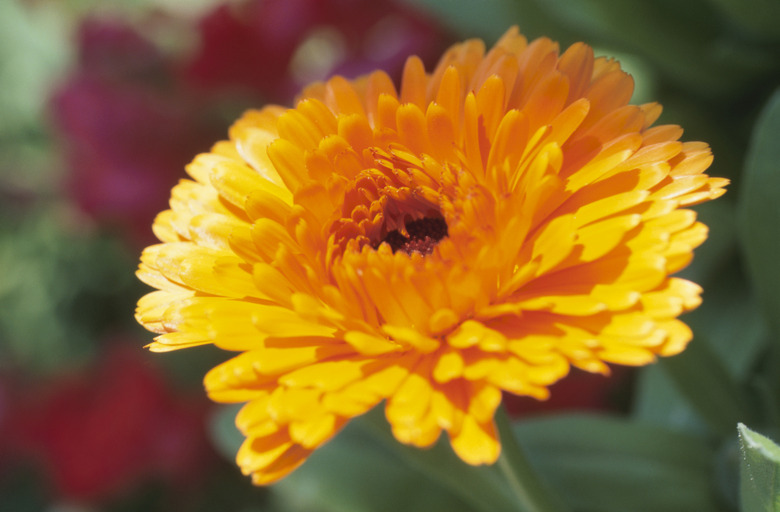How To Transplant Garden Mums From Pots Into The Ground
Mums (Chrysanthemum spp.) feature large, ruffled flowers that bloom most profusely when the days grow shorter in late summer and fall. They are perennial in U.S. Department of Agriculture plant hardiness zones 5 through 9, although they also grow well as annuals. Transplant any potted mums in spring after frost danger has passed or in fall six weeks before the first expected freeze. These colorful fall flowers bloom most profusely when they receive all-day sunlight in a well-drained and moderately fertile bed.
Step 1
Step 1
Break up the top 6 inches of soil with a spade about 10 days before transplanting the mums. Sprinkle 1/2 pound of 5-10-5 fertilizer over every 50 square feet of bed and mix it in evenly with the loosened soil. Smooth the surface after amending but avoid packing it down.
- feature large, ruffled flowers that bloom most profusely when the days grow shorter in late summer and fall.
- Transplant any potted mums in spring after frost danger has passed or in fall six weeks before the first expected freeze.
Step 2
Step 2
Turn the soil again immediately before planting. Dig a planting hole for each potted mum that is the same depth as the pot and 1 1/2 times as wide. Space the holes 2 feet apart in all directions for bushy mums or 1 1/2 feet apart for tall varieties.
Step 3
Step 3
Water the soil in the pot until water drains freely from the bottom drainage holes. Turn the pot on its side and slide out the root ball. Thump the bottom and sides of the pot, if necessary, to dislodge the mum.
Step 4
Step 4
Set the mum in the planting hole, adjusting it until it's at the same depth it was growing in the pot. Fill the hole with soil, packing it firmly around the roots.
- Turn the soil again immediately before planting.
- Fill the hole with soil, packing it firmly around the roots.
Step 5
Step 5
Water the bed immediately after transplanting so the top 6 inches of soil feels moist. Spread 2 inches of mulch over the soil surface to suppress weeds and conserve soil moisture.
Tip
Although perennial, mums are often treated as annuals because they don't always survive winter. Cutting back the dead foliage in fall and covering the roots with a 4-inch layer of mulch improves their chance for survival.
Warning
Mums are toxic if ingested, and they may cause skin irritation. Wear gloves when handling the plants.
Things Needed
- Spade
- 5-10-5 fertilizer
- Trowel
- Mulch
